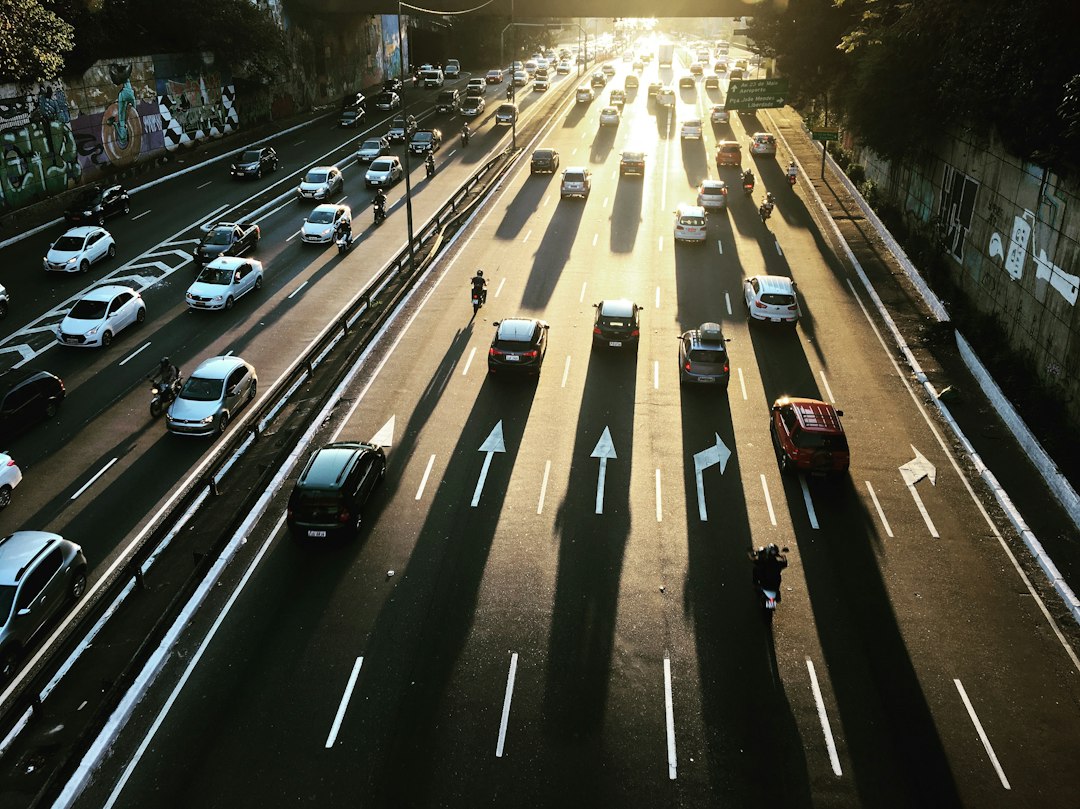What Is Vehicle Counting & Why Do You Need It In 2023?

In many urban areas, managing traffic flow effectively is a significant challenge. Traffic congestion not only leads to increased travel time and fuel consumption but also contributes to air pollution and road accidents.
One of the primary causes of inefficient traffic management is the lack of accurate and real-time data on vehicle movement. Traditional methods of vehicle counting, which often involve manual counting or basic sensor technologies, are unable to provide accurate counts, especially during peak hours or in high-traffic areas.
Furthermore, these methods struggle to distinguish between different types of vehicles and other objects on the road, leading to inaccurate vehicle detection and object detection.
This is where vehicle counting systems come in. In this blog post, we will discuss what vehicle counting is and why it is becoming increasingly important in urban areas.
What Is a Vehicle Counting System?
A vehicle counting system is a software-based system used to track the total number of vehicles entering and exiting an area. It can measure traffic flow, detect vehicles passing by using object detection technologies such as cameras or infrared sensors, and provide real-time data about the number of vehicles.
Vehicle counting systems are typically installed in areas where there is a need to control traffic or monitor usage for safety purposes.
How Do Vehicle Counting Systems Work?
Vehicle counting systems are used to track and count the number of vehicles passing through a specific location, such as a roadway or intersection. These systems utilise various technologies to accurately collect data on traffic volume and flow. Here’s an overview of how vehicle counting systems work:
Inductive Loop Detectors:
One common method of vehicle counting is through the use of inductive loop detectors. These detectors consist of loops of wire embedded in the roadway surface at specific locations. When a vehicle passes over the loop, it induces a change in the electrical current, which is detected and recorded by the system. By analysing the frequency and duration of these changes, the system can determine the number of vehicles passing through.
Video-Based Systems:
Another approach is the use of video-based systems that rely on cameras to capture footage of the traffic. These cameras are strategically positioned to provide a clear view of the road and record the movement of vehicles. Advanced image processing algorithms are then applied to analyse the video feed and detect and track vehicles. By tracking their movement, the system can accurately count the number of vehicles passing by.
Radar Technology:
Radar-based vehicle counting systems use radio waves to detect the presence and movement of vehicles. These systems emit radar signals that bounce off the vehicles and return to the sensor. By measuring the time it takes for the signals to return and analysing the Doppler effect, the system can determine the speed, direction, and number of vehicles passing through the monitored area.
Bluetooth and Wi-Fi Detection:
Some modern vehicle counting systems leverage Bluetooth and Wi-Fi signals emitted by vehicles. These systems rely on sensors strategically placed along the roadway that can detect and capture these signals. By analysing the unique identifiers emitted by vehicles and their timestamps, the system can identify individual vehicles and count their passage.
Combination Systems:
To achieve greater accuracy and reliability, some vehicle counting systems use a combination of different technologies. For example, a system might integrate inductive loop detectors and video cameras to cross-verify and validate the data collected.
Once the vehicle counting system collects and processes the data, it can provide valuable insights into traffic patterns, such as peak hours, average traffic volume, and travel time. This information is instrumental for transportation planning, optimising traffic flow, and making informed decisions regarding infrastructure improvements.
Benefits of Vehicle Counting
Vehicle counting presents numerous benefits for managing traffic and improving transportation systems. Some of the key advantages include:
Traffic Management:
One of the key benefits of vehicle counting is its ability to assist in traffic management. By accurately tracking the flow of vehicles, authorities can identify congestion hotspots, optimise traffic signal timings, and make informed decisions for infrastructure improvements.
Planning and Design:
Vehicle counting data helps urban planners and engineers analyse traffic patterns and make informed decisions regarding road network design and expansion. It provides valuable insights into peak traffic hours, average daily traffic volumes, and the distribution of vehicles across different routes.
Road Safety:
By monitoring the number of vehicles passing through a particular area, authorities can identify locations with high accident rates and take appropriate measures to improve road safety. This may include installing additional signage, improving visibility, or implementing traffic calming measures.
Public Transportation:
Vehicle counting data can be used to analyse the usage and demand for public transportation services. By understanding the number of private vehicles on the road, transportation agencies can assess the need for additional buses or trains, adjust schedules, and optimise routes.
Environmental Impact:
Vehicle counting helps measure the impact of vehicular traffic on the environment. By quantifying the number of vehicles and their emissions, authorities can assess air quality, noise pollution levels, and make informed decisions to implement sustainable transportation solutions.
Economic Analysis:
Vehicle counting data provides valuable insights for economic analysis. It helps businesses understand customer behaviour, identify potential locations for new stores or services, and assess the impact of transportation infrastructure on local economies.
How Sensor Dynamics Can Assist You
At Sensor Dynamics, we have a wide range of vehicle classification and ticketless parking systems. Our products utilise cutting-edge technologies, and we can create a custom solution for your unique needs.
With over 19 years of experience in the industry, we can assist you in finding the right vehicle counting solution to meet your specific requirements. Our systems are designed to be accurate and reliable, helping you optimise traffic flow and improve your transportation management.
Conclusion
Vehicle counting plays a critical role in managing and optimising transportation systems. By providing accurate data on traffic volume and patterns, it aids urban planners, engineers, and policymakers in making informed decisions about infrastructure development, traffic regulations, and transportation improvements.
With the use of advanced technologies, vehicle counting has become more reliable and precise. As cities continue to grow and evolve, efficient and effective vehicle counting systems will remain instrumental in facilitating smoother traffic flow, reducing congestion, enhancing road safety, and ultimately contributing to more sustainable and smarter cities.
To learn more about how Sensor Dynamics can assist you in implementing a vehicle counting system, contact us today.

